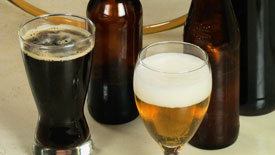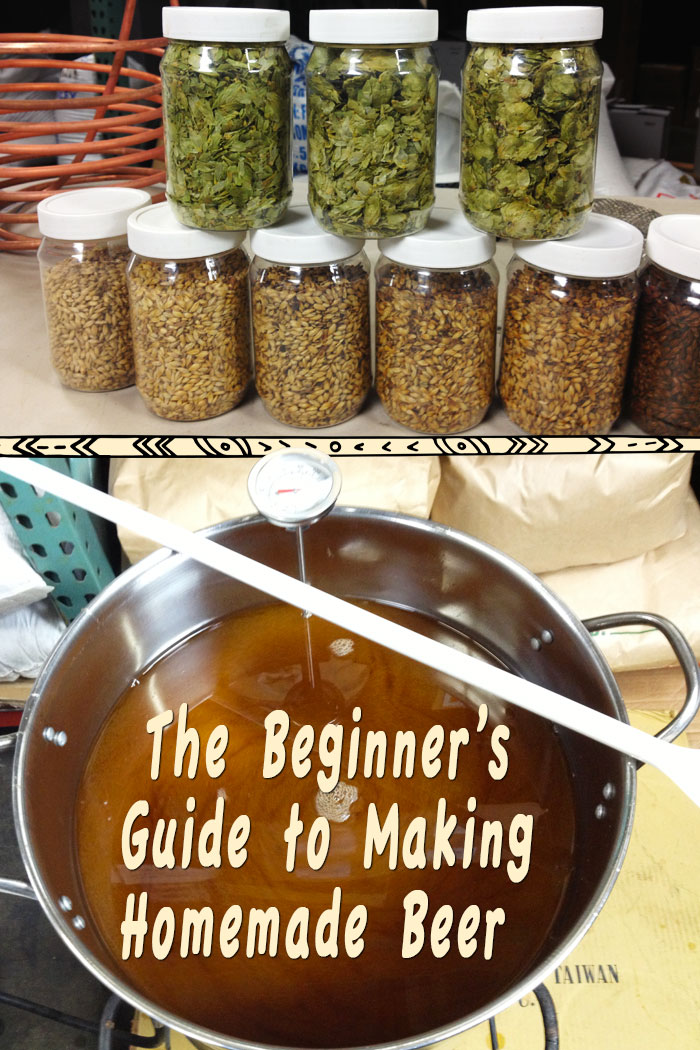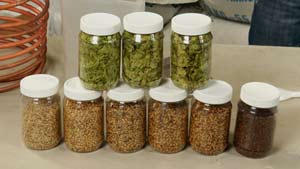Beer and bread share so much in common, not just in key ingredients, (yeast, grain, and water), also in the importance of freshness. Like a good loaf of bread, most beers except for a few styles that actually improve with age, require timely consumption after being produced, to achieve a maximum flavor and quality finish. That’s one reason it’s possible with continued practice and experience to make a home brew that tastes almost as good, and sometimes better than many of the commercial beers purchased at the store.
In this episode, veteran beer-making instructor Jeremy Frey, from F. H. Steinbart Company, one of the oldest home beer supply houses in the country, shows us how to make a batch of home-made beer. Below is the recipe from the video.
Amber Ale recipe
Ingredients
- 1- 7 lb. Jar Steinbart Light LME (Briess Brewers Gold Malt Extract)
- 1- 1 oz. Bag Norther Brewer Hops
- 1- 1 oz. Bag Fuggle Hops
- 1- Bag of crushed, vacuum sealed grain:
2 oz. Chocolate Malt
1 lb. Crystal Malt 60L - 1- Whirfloc Tablet (clears the sentiments from the bottled beer)
- 1- Package US-05 Ale Yeast
- 4- Hop Steeping Bags
- 1- Kit Instructions (for those who purchase the complete kit from the F.H. Steinbart Company)
Beer Making Instructions:

- Heat between 2 gallons and 5 gallons of water (a 6 gallon pot is ideal, but not essential) to 165 degrees Fahrenheit.
- Place the grains in a steeping bag and steep at between 160-170F for 30 minutes. Remove the grains from the heated water.
- Turn off heat and add malt extract, stirring until fully dissolved.
- Return to heat, bring to boil for 5 minutes then add bitterring hops (Northern Brewer)
- Continue boiling for 45 minutes then add 1/2 oz. of aroma hops (Fuggle) and Whirlfloc tablet or Irish Moss (removes the sediment for a clear looking finished beer).
- Boil for 15 minutes then add remaining 1/2 oz. of aroma hops (Fuggle).
- Turn off heat and cool mixture by placing kettle in an ice bath or using a wort chiller.
- Add mixture to fermenter, removing hops, and bring total volume to 5 gallons using non-distilled bottled water or filtered tap water.
- Aerate unfermented wort (shaking works well).
- Pitch yeast and ferment at 68F to 70F.
- In 1-2 weeks, measure the specific gravity (SG) of the beer using a hydrometer. The batch of beer is ready to be bottled, or put into cornelius tank (with a carbonation system) if the SG is below 1.016 and the beer no longer appears to be fermenting (foaming, and releasing gas bubbles) in the fermentation bottle or keg.

Most of the videos featured on Cooking Up a Story were produced, filmed, and edited by Rebecca Gerendasy. Fred Gerendasy contributed as a writer to many of the posts and occasionally as the interviewer. Visit Rebecca Gerendasy Clay – Art and Fred Gerendasy Photography to see their current work.

